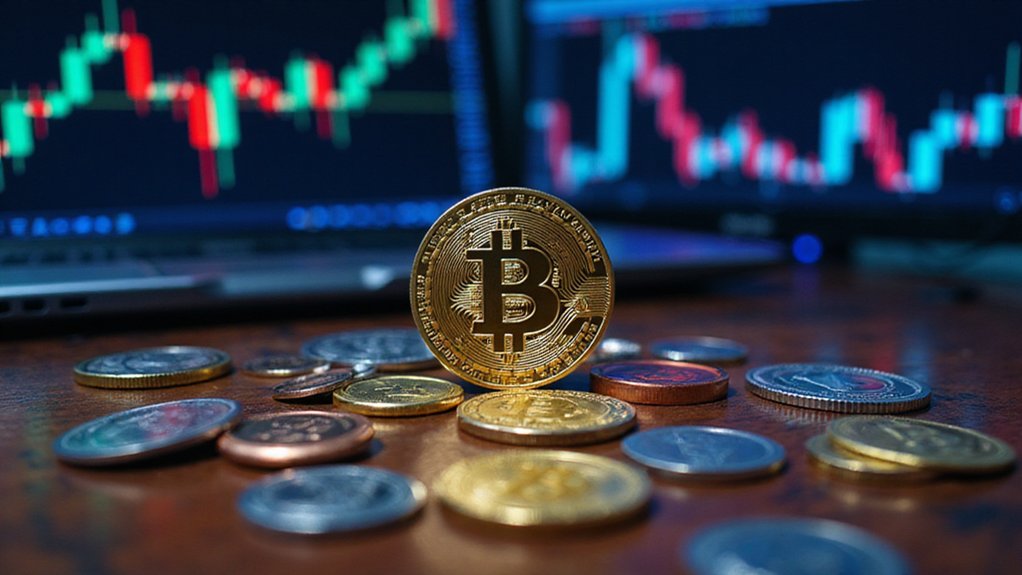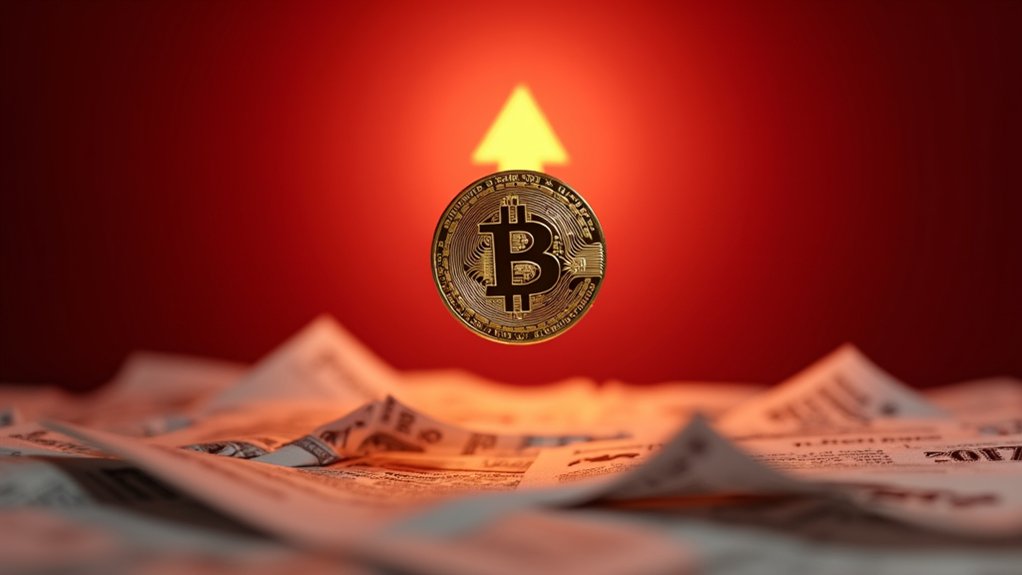Liquidity pools function as automated market makers where users deposit paired cryptocurrencies into smart contracts, creating trading reserves that eliminate traditional order books. The constant product formula (x * y = k) determines pricing—as traders swap tokens, ratios shift and prices adjust algorithmically. Liquidity providers earn proportional transaction fees while facing impermanent loss risks when token values diverge substantially from initial deposit ratios. These mechanisms democratize market making across decentralized exchanges, though their mathematical elegance masks considerable complexity beneath.

The advent of liquidity pools represents perhaps the most elegant solution to a problem that has plagued decentralized finance since its inception: how does one facilitate seamless trading without the traditional market makers who, despite their many flaws, at least showed up to work every day?
These pools—essentially collections of cryptocurrency tokens locked within smart contracts—have emerged as the backbone of decentralized exchanges, enabling peer-to-contract trading through automated market maker protocols.
The mechanism operates with deceptive simplicity.
Behind liquidity pools’ elegant facade lies a mechanism that transforms complexity into apparent simplicity—a dangerous seduction for unwary participants.
Users deposit pairs of cryptocurrencies into smart contracts, creating reserves against which others can trade.
The pricing follows algorithmic formulas, typically the constant product equation x * y = k, where the product of two token quantities remains constant.
When someone purchases tokens from the pool, they increase one token’s quantity while decreasing the other’s, automatically adjusting the price based on the new ratio.
Smart contracts execute these trades instantaneously, eliminating the need for order books or centralized intermediaries.
Liquidity providers earn transaction fees proportional to their contribution, creating passive income opportunities that have attracted billions in total value locked.
The system facilitates various DeFi operations beyond simple swaps—lending protocols rely on these pools for collateral, while yield farming strategies often involve staking liquidity pool tokens in additional protocols for enhanced returns.
However, this financial alchemy comes with notable risks.
Impermanent loss occurs when token price ratios diverge from deposit ratios, potentially leaving providers with less value than simply holding the original tokens.
Smart contract vulnerabilities present existential threats, while market volatility can dramatically impact returns—though one could argue that volatility risk in cryptocurrency markets is rather like worrying about getting wet while swimming in the ocean. The peer-to-peer transactions enabled by permissionless blockchains eliminate traditional financial intermediaries, though they also introduce risks such as coding errors and potential security breaches.
Different pool types serve varying risk appetites: stablecoin pools offer lower volatility, dual-asset pools provide balanced exposure, and specialized pools cater to specific DeFi functions. Platforms like Balancer enable multi-asset pools that accommodate more than two tokens with customizable ratio configurations.
Cross-chain pools enable liquidity across blockchain networks, expanding the ecosystem’s reach.
The democratization of finance through AMMs extends far beyond convenience, potentially serving the 1.7 billion adults worldwide who remain unbanked and lack access to traditional financial services.
Ultimately, liquidity pools democratize market making, transforming ordinary users into the infrastructure providers that keep decentralized finance operational—a remarkable achievement that would be more impressive if it weren’t so financially perilous for the uninitiated.
Frequently Asked Questions
What Are the Tax Implications of Providing Liquidity to Pools?
Providing liquidity triggers taxable events when depositing assets (crypto-to-crypto trades subject to capital gains) and receiving LP tokens.
Pool rewards constitute ordinary income, not capital gains—a distinction that apparently escapes many yield farmers.
Withdrawals create additional taxable events, complicated by impermanent loss affecting cost basis calculations.
The IRS treats each transaction separately, requiring meticulous record-keeping that would challenge even seasoned accountants maneuvering this regulatory maze.
How Do I Calculate Potential Impermanent Loss Before Investing?
Calculating potential impermanent loss requires comparing holding tokens individually versus pooling them.
Investors input initial token quantities and anticipated price ratios into online calculators (CoinGecko, Daily Defi offer reliable options).
The constant product formula X×Y=K governs rebalancing—as prices diverge, pool composition shifts unfavorably.
Smart money factors in trading fees and yield rewards, which often offset losses.
Those tax implications discussed earlier? They compound when frequent rebalancing triggers additional taxable events.
Can Liquidity Pools Be Hacked or Suffer From Smart Contract Vulnerabilities?
Liquidity pools face considerable smart contract vulnerabilities, as demonstrated by the Vyper compiler bug that devastated Curve Finance and similar protocols.
These immutable contracts, once deployed with flaws, cannot be patched—a rather inconvenient design feature.
Attackers exploit reentrancy guards, manipulate token prices through flash loans, and drain pools via sophisticated multi-wallet schemes.
Even well-audited protocols remain susceptible to zero-day exploits, making security audits necessary but insufficient protection.
What Happens to My Funds if a Liquidity Pool Fails?
When liquidity pools fail, investors face various unpleasant outcomes depending on the failure mechanism.
Smart contract exploits can result in complete fund disappearance, while rug pulls leave tokens worthless and untradeable.
Impermanent loss becomes permanent upon withdrawal during price divergence.
Low liquidity creates exit difficulties with unfavorable pricing.
Recovery prospects range from zero (in fraud cases) to partial (during market volatility), making due diligence essential.
How Do I Withdraw My Liquidity and Earnings From Pools?
One withdraws liquidity by connecting their wallet to the DeFi platform, proceeding to the specific pool, and selecting the withdrawal function.
After specifying the LP token amount and confirming transaction details (including those delightful gas fees), the blockchain processes the request within seconds.
The withdrawn assets—including any accumulated trading fees—appear in the connected wallet, though impermanent loss may have quietly eroded initial investment values during market fluctuations.









